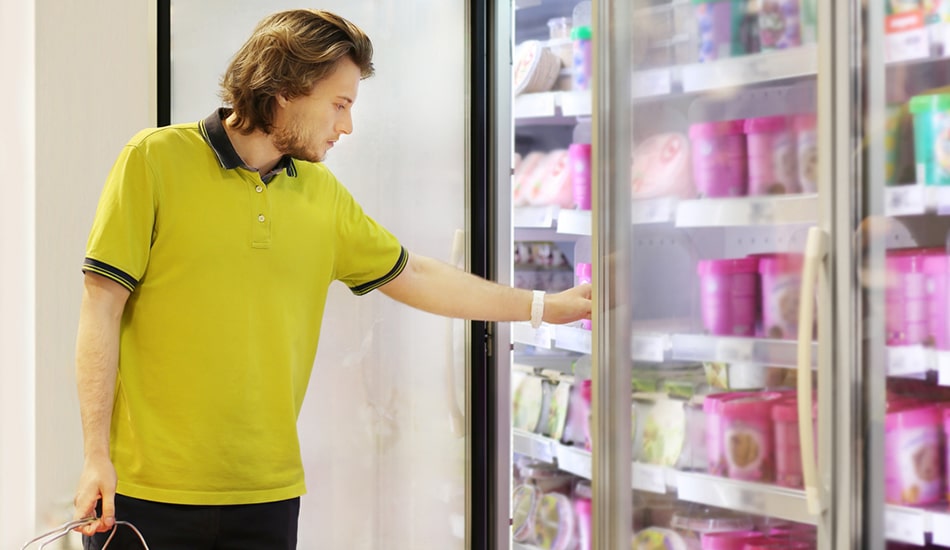Ricky Mishra, Product Manager
Matthew Zelek, Product Manager
We live in interesting times. The COVID-19 pandemic has changed how retail business is conducted and how most people view their personal safety in a retail space. Concerns are shared by employees as well as retail customers, young and old, loyal shoppers, and bargain hunters. Most retailers have expanded their cleaning and sanitation cycles, installed plexiglass barriers, marked out safe distances on the sales floor, and have required all workers to wear gloves and face masks. These changes were taken both to reduce potential transmission of the airborne virus and to visually demonstrate that commitment to boost customer confidence. What more can be done?
While all these measures are essential, it is important to remember that customers and associates know that the greatest risk is from close proximity to those already infected. So, while face masks and fixture adjustments are all appropriate and necessary, what can be done to demonstrate that the retailer is taking steps to minimize the risk that customers shopping in their stores will encounter an associate carrying the virus? What can be done to minimize the risk that associates are being exposed in break rooms and work areas to colleagues who may unknowingly harbor the virus?
CDC guidance suggests that businesses “Develop and implement procedures to check for signs and symptoms of employees daily upon arrival, as feasible.” This can be difficult because of the many symptoms associated with COVID-19, including fever, cough, shortness of breath, fatigue, muscle or body aches, headache, new loss of taste or smell, sore throat, congestions, nausea, and or diarrhea. It is difficult for an employer to check for all these symptoms. Most of them will require employees to be trained on recognizing the symptoms and staying at home. However, checking for one of the most common symptoms, the presence of fever, is now much easier with technology.
Technology considerations
Some retailers mandated employee temperature checks right from the start, with fixed staff on duty at certain times or by managers on demand as new shifts started. Most quickly learned that the cost of implementation was great and often involved a considerable disruption to managers performing such tests on demand. Automation of this process can be done in a number of ways:
- As part of the clock-in procedure at the time clock with a health and temperature scanner with time clock functionality.
- At a separate health and temperature scanner kiosk, usually in an off-floor location perhaps adjacent to the time clock.
- At a separate health and temperature scanner kiosk with printer that prints a dated certification badge/sticker for the employee to wear indicating to customers and colleagues that they were tested and authorized to work.
All of these processes are usually accompanied by attestation questions meant to help assess the risk that the individual might spread the virus. Questions might include whether the person is exhibiting specified symptoms or been in contact with someone suspected or diagnosed with the virus. These attestation questions can be customized by the organization to meet particular federal, state or local regulations applicable to the business.
Using any of these approaches, when an employee either fails the temperature screening or fails to answer the attestation questions correctly, managers can be alerted and deal with the situation appropriately per company policy. Associate health support programs can also be engaged. But, most importantly, an associate who may be sick or at risk to spread the virus is prevented from working and possibly infecting other associates and customers.
While basic infrared technology has been available for a while, the latest versions of health and temperature scanner time clocks and temperature scan kiosks have the ability to perform biometric validation for the associate and to perform the temperature test while an associate is wearing a face mask. Response time is very fast, certainly faster than calling a manager on duty to perform the check when needed. For businesses spending a significant amount of either fixed or management time performing these checks manually, temperature checks can be better automated and fully documented with technology offering a quick payback. The extent of liability for taking or failing to take action to safeguard both employees and customers during the pandemic is an open question, but a thoughtful compliance program including automated temperature checks may, in addition to promoting employee and customer confidence and loyalty, be a vital component of liability risk management.
Changing perceptions
Think about how perceptions have changed during the pandemic. Employees and customers are expecting stores to increase vigilance to safeguard their health. Will this change after a vaccine is available? Wouldn’t the same precautions make sense throughout the year, especially during flu season? And how will customers view those businesses that try to return to pre-pandemic routines. Will those that continue to demonstrate health, safety and well-being have a leg up on those that don’t? Which will be judged a better place to shop? Which will be judged a better place to work? Which will be more likely to see profitable mix return to signature perishable departments?
This solution is something that all retailers should be considering right now. It demonstrates that you care, and it may be the best way to document that you took proactive steps when they were needed.




